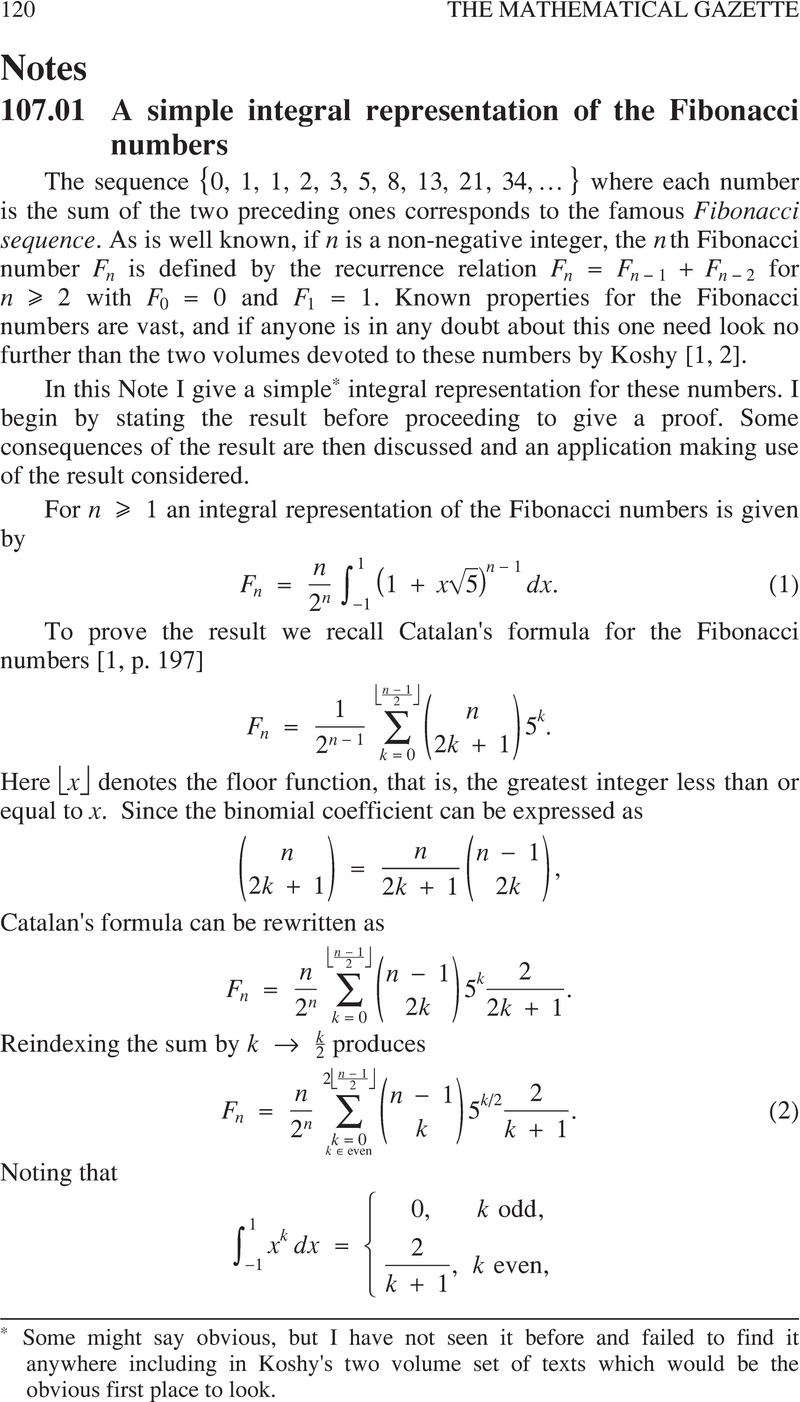No CrossRef data available.
Article contents
107.01 A simple integral representation of the Fibonacci numbers
Published online by Cambridge University Press: 16 February 2023
Abstract
An abstract is not available for this content so a preview has been provided. Please use the Get access link above for information on how to access this content.

- Type
- Notes
- Information
- Copyright
- © The Authors, 2023. Published by Cambridge University Press on behalf of The Mathematical Association
References
Koshy, T., Fibonacci and Lucas numbers with applications, Vol. 1 (second edition), John Wiley & Sons (2018).CrossRefGoogle Scholar
Koshy, T., Fibonacci and Lucas numbers with applications, Vol. 2, John Wiley & Sons (2019).Google Scholar
Dilcher, K., Hypergeometric functions and Fibonacci numbers, Fibonacci Quarterly 38 (2000) pp. 343–363.Google Scholar
Glasser, M. L. and Zhou, Y., An integral representation for the Fibonacci numbers and their generalization, Fibonacci Quarterly 53 (2015) pp. 313–318.Google Scholar
Andrica, D. and Bagdasar, O., Recurrent sequences: Key results, applications, and problems, Springer (2020).CrossRefGoogle Scholar
Folland, G. B., Real Analysis: Modern Techniques and Their Applications, John Wiley & Sons, New York (1999).Google Scholar





